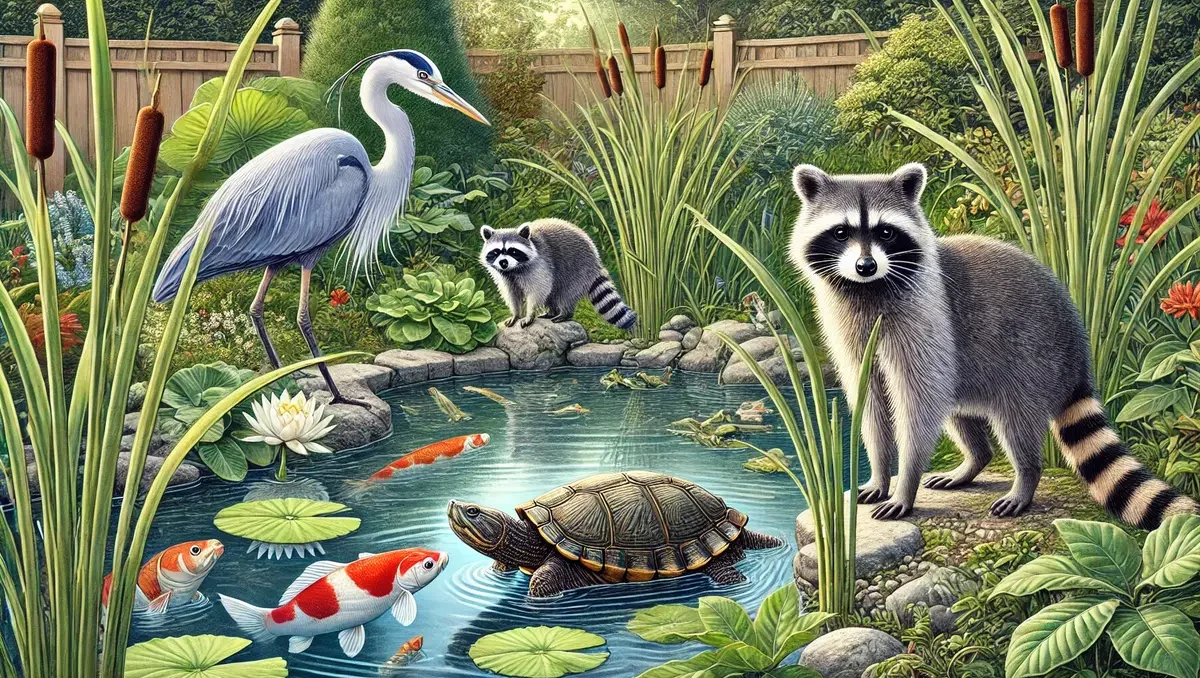
Ponds in New York offer a serene environment for fish to thrive, but they can also attract a variety of predators.
From birds of prey to sneaky mammals, pond predators can pose risks to your koi or other pond fish. Understanding which predators are common in New York and how to protect your pond is key to maintaining a safe habitat for your aquatic pets.
Common Pond Predators in New York
Several predators are known to target fish in New York ponds, especially those housing koi and other ornamental species. These animals can cause significant damage, leading to the loss of fish, disruption of pond ecosystems, and potential damage to water quality.
It is important to be aware of these threats in order to take preventive measures and protect pond health.
Here are the top culprits:
Pond Predator: Blue Heron
The Great Blue Heron is a large, wading bird often seen around ponds, marshes, and lakes. They have long necks and sharp beaks, which they use to catch fish. A single heron can empty a pond of its fish stock in a short period.
Great Blue Herons are common in New York due to its abundant wetlands, lakes, and rivers, providing ideal habitats for hunting fish, amphibians, and small creatures essential for their survival.
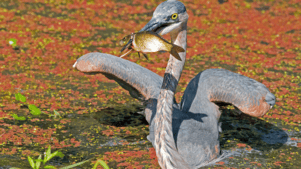
How to protect your pond: Set up barriers around the pond or use motion-sensitive lights to scare them away at night.
Protect Your Koi from Predators Today!
Keep your pond safe and your koi secure with our Premium Pond Nets. Durable, reliable, and easy to use, they’re the perfect solution for shielding your koi from herons, raccoons, and other threats. Your koi deserve the best protection—don’t wait until it’s too late!
Pond Predator: Racoons
Raccoons are nocturnal and skilled at fishing. These clever creatures can easily access ponds by wading into shallow water or using their dexterous front paws to grab fish.
Raccoons are common in New York due to their adaptability, thriving in urban and suburban areas. They scavenge food from trash, inhabit parks and alleys, and are skilled at finding shelter.
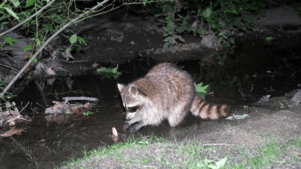
How to protect your pond: Set up barriers around the pond or use motion-sensitive lights to scare them away at night.
Pond Predator: Mink
Mink are agile and excellent swimmers, capable of diving into ponds to hunt fish. They are especially active during the winter months and can cause significant damage to a pond’s population.
Minks are common in New York because of the state’s abundant wetlands, rivers, and forests, which provide ideal habitats. These semi-aquatic mammals thrive by hunting fish, amphibians, and small mammals.
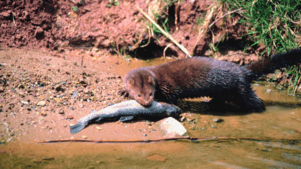
How to protect your pond: Mink-proof your pond by installing a secure fence that prevents them from reaching the water.
Pond Predator: Osprey
Ospreys, or “fish hawks,” are birds of prey that dive from great heights to catch fish. Although they tend to hunt in larger bodies of water, ospreys will sometimes target smaller ponds, especially if the fish are abundant.
Ospreys are common in New York due to its rich waterways, including rivers and coastal areas. These habitats provide ample fish, their primary food source, and suitable nesting sites on platforms and trees.
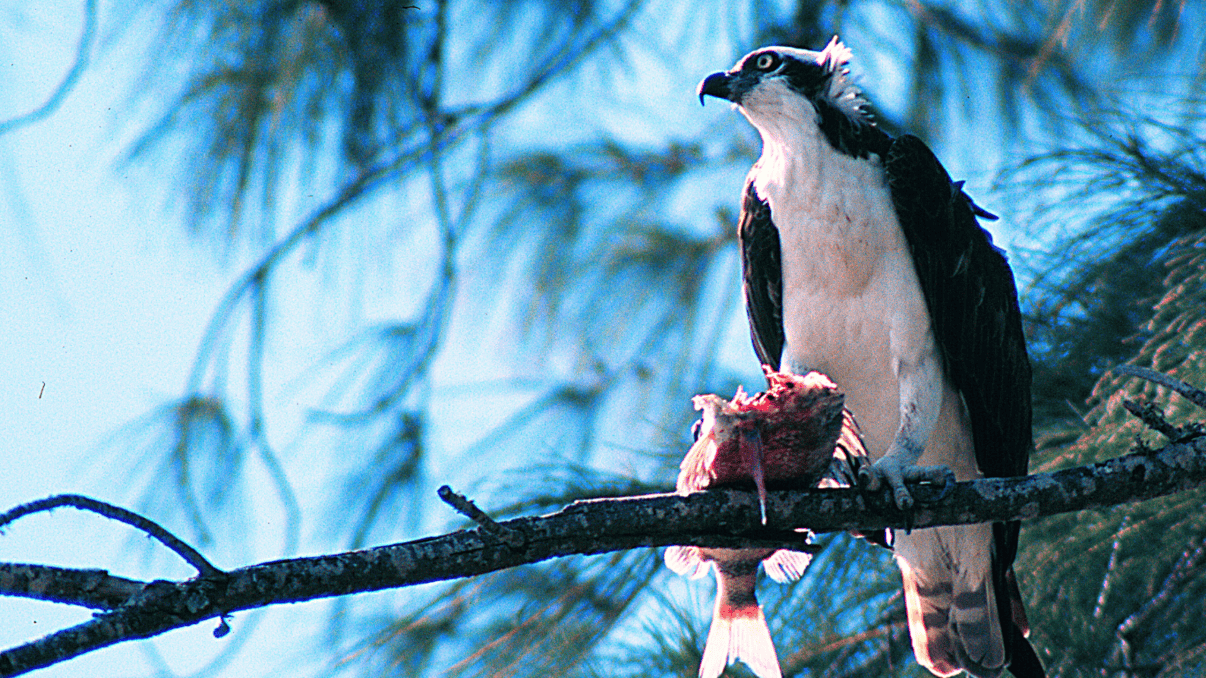
How to protect your pond: Plant trees and shrubs around your pond to offer some cover for your fish. You can also install overhead netting.
Pond Predator: Snapping Turtles
Snapping turtles are opportunistic predators that lurk at the bottom of ponds. They can grab and eat fish, especially smaller species, and will even snatch injured or slow-moving koi.
Snapping turtles are common in New York due to its abundant freshwater lakes, ponds, and wetlands. These resilient reptiles thrive in diverse aquatic habitats, feeding on plants, fish, and small animals.
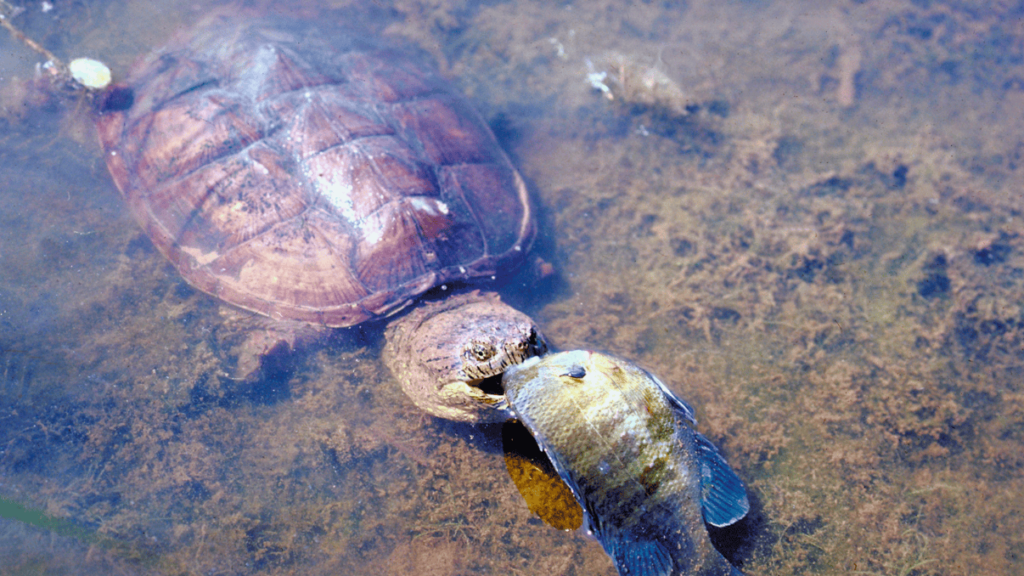
How to protect your pond: Installing barriers at the pond’s edge or adding deep water areas where fish can escape might deter snapping turtles from entering.
Additional Pond Protection Tips
- Install pond netting: This will prevent larger predators, like herons and ospreys, from reaching your fish.
- Provide hiding spots: Adding rocks, plants, and submerged structures gives your fish safe places to retreat.
- Use motion-sensing devices: Lights, sprinklers, or alarms can help keep predators at bay.
Protect Your Koi: High-Quality Pond Products for Predator Defense and Fish Health
Protecting your koi from predators requires a combination of high-quality products, proactive strategies, and ongoing care. Regardless of location, pond owners must remain vigilant about potential threats to their fish. Identifying common predators in the area allows for targeted measures, such as installing durable netting, barriers, or motion-sensitive deterrents that effectively startle intruders.
👉 Shop for Pond Products and Supplies at Kodama Supply and protect your koi today!
